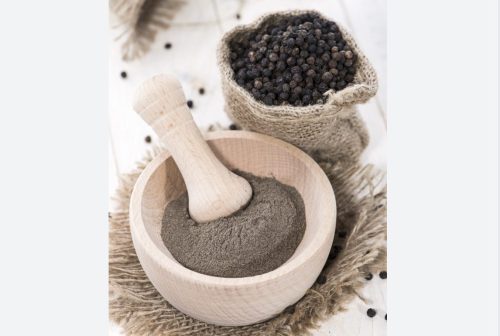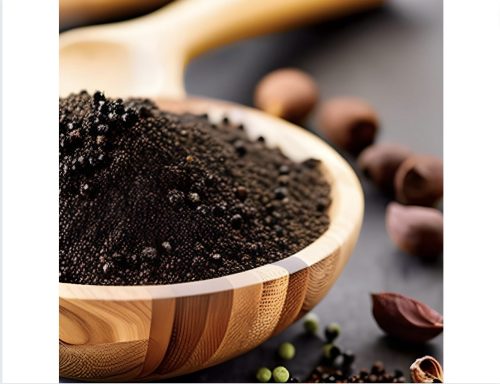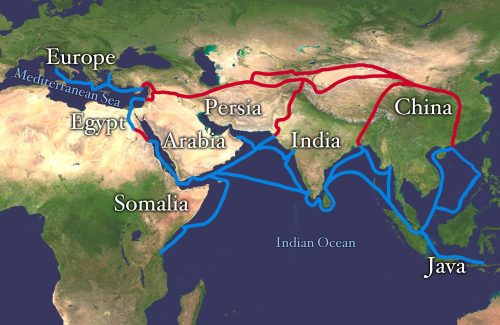Pepper is one of the most commonly used spices in cooking. It is used to add a sharp, pungent flavor to dishes, and is often paired with salt as a seasoning. Pepper comes in different varieties such as black pepper, white pepper, green pepper, and pink peppercorns. It is known for its strong taste and aroma which makes it an essential ingredient in many culinary dishes.
Why this Spice is Essential for a Flavorful and Healthy Culinary Experience
Pepper is a spice that is derived from dried fruit of the Piper nigrum plant. The fruit is typically dried and then put into grinder to mill into fine powder or left whole as peppercorns. It has been used for thousands of years in various cuisines worldwide. It can be found in both sweet and savory dishes, ranging from meat dishes to desserts.

Brief History of Pepper Used in Food
Pepper has been used since ancient times as a valuable commodity for trading across countries. It was originally cultivated in India, but eventually found its way across Europe during the Middle Ages where it became popular amongst royalty and the wealthy due to its high cost.
By the 16th century, pepper was widely traded across Asia, Europe and Africa due to its high demand. The importance of pepper also extended beyond just adding flavor to food – it was believed to have medicinal properties by early civilizations such as Ancient Greeks and Romans who thought that it could cure illnesses such as constipation or toothaches.
Importance of Pepper in Food
Pepper plays an important role in cooking due to its ability to enhance flavors by adding a unique warmth and depth that cannot be substituted by any other spice. It has become an essential ingredient across various cuisines worldwide including Indian curries, Italian pasta sauces or French meat dishes. Additionally, pepper contains numerous health benefits such as being an antioxidant, having anti-inflammatory properties and digestive benefits.
Also check: The Flavorful and Beneficial World of Ground Salt: Exploring Types, Uses, and Health Benefits
It is also a rich source of minerals like iron and manganese which are essential for maintaining good health. Therefore, it is not merely an ingredient that adds flavor but also contributes to overall well-being.
Health Benefits of Pepper

Anti-inflammatory properties
Piperine, the active ingredient in black pepper, has been shown to have anti-inflammatory effects. Inflammation is the body’s natural response to injury or infection, but chronic inflammation can lead to a variety of health problems such as heart disease, cancer, and arthritis.
Studies have shown that piperine can inhibit the production of certain inflammatory markers in the body and reduce inflammation. Adding black pepper to your meals may help reduce your risk of chronic inflammation-related diseases.
Antioxidant properties
Black pepper is also high in antioxidants which protect your cells from damage caused by free radicals. Free radicals are unstable molecules that can damage cells and contribute to aging and a variety of diseases including cancer and Alzheimer’s disease. Piperine in black pepper has been shown to have potent antioxidant properties that can help protect against these harmful effects.
Digestive benefits
Pepper is known for its ability to stimulate digestion. It increases the production of hydrochloric acid in the stomach which helps break down food and aids in digestion.
This can help relieve symptoms like bloating, gas, constipation, and indigestion. Piperine has also been shown to increase digestive enzyme activity which further aids in digestion.
Overall, incorporating black pepper into your diet can provide several health benefits due to its anti-inflammatory, antioxidant, and digestive properties. Try adding freshly ground black pepper to your meals or snacks for a flavorful boost with added health benefits!
Flavor Enhancement
Pepper is not just a spice but a flavor enhancer that has been used in cooking for centuries. It not only adds heat and pungency to food, but also enhances the natural flavors of other ingredients.
The capsaicin in pepper stimulates the taste buds and triggers a release of endorphins that create a pleasant sensation in the mouth. This is why it is often added to dishes to increase their palatability, making them more enjoyable to eat.
How Pepper Enhances The Taste of Food
Pepper has the ability to enhance the flavors of other ingredients in a dish, due to its unique chemical composition. It contains essential oils such as limonene and pinene which have subtle citrus notes that complement many different types of ingredients.
For example, adding freshly ground black pepper to egg dishes brings out their natural richness and flavor. Similarly, white pepper enhances creamy sauces and soups by providing an earthy undertone that balances the richness of cream or butter.
Different Types of Pepper and Their Flavors
There are several varieties of pepper available in markets today, each with its unique flavor profile. Black pepper is one of the most common types used in cooking due to its strong aroma and taste.
White pepper has a milder taste compared to black pepper but still offers warmth without being overpowering. Green peppercorns have a fresh, slightly fruity flavor while pink peppercorns are sweet with hints of berry notes.
Pairing Pepper with Other Spices
Pepper pairs well with various spices like cumin, coriander, and turmeric for an added depth of flavor when making spice rubs or seasoning blends for meats or roasted vegetables. It can also be paired with herbs like rosemary or thyme for an aromatic touch that can take dishes from ordinary to extraordinary.
Additionally, pairing pepper with sweet spices like cinnamon or nutmeg can create a unique flavor profile that can be used in baked goods or desserts. The possibilities are endless when it comes to using this versatile spice in the kitchen.
Culinary Uses
Common dishes that use pepper
Pepper is an essential ingredient in many famous dishes worldwide. One of the most popular of these is the French steak dish, Steak au Poivre. This dish consists of a juicy cut of steak coated with plenty of cracked black peppercorns and seared to perfection.
Another popular dish that relies heavily on pepper is spaghetti alla carbonara, a traditional Italian pasta dish made with eggs, pancetta or bacon, Parmesan cheese, and black pepper. Other common dishes that incorporate pepper include coq au vin, a French chicken stew that often includes black peppercorns; Indian chicken tikka masala which uses black pepper to give it a subtle smoky flavor; and Thai green curry which derives its heat from green peppers.
Different cuisines that heavily rely on the use of pepper
Pepper plays an important role in many different cuisines around the world. In fact, it has been used as a seasoning for thousands of years in countries such as India, China, and Indonesia. In particular, Indian cuisine relies heavily on spices like cumin and coriander alongside freshly ground black pepper to create aromatic curries.
In Southeast Asia’s cuisine such as Thai or Vietnamese food often get their spiciness from chilies but also use white or black peppercorns in many dishes like soups or stir-fries. Italian cuisine also makes good use of fresh cracked black peppers over pasta dishes or grilled meats as well as using white peppercorns in some sauces.
Pepper as a seasoning for meats, vegetables and soups
Pepper is incredibly versatile when it comes to cooking with meat. It can be used to season any cut before grilling or roasting but can also be added at the end of cooking time for added flavor.
Vegetables also benefit from the addition of pepper, particularly if they are roasted or grilled. Black pepper pairs well with root vegetables such as carrots and potatoes, while white pepper is perfect for lighter vegetables like zucchini and green beans.
Pepper can also be used to add flavor to soups and stews. For example, a classic chicken noodle soup can be transformed with the addition of a few freshly cracked peppercorns.
Similarly, black pepper adds depth and complexity to creamy vegetable soups like pumpkin or cauliflower soup. Pepper can be added to taste in these types of dishes but should not overpower the other flavors in the dish.
Fun Facts About Pepper
Pepper is not just a common spice used in cooking, it has intriguing facts that are worth knowing. First, the different colors and forms of peppercorns vary in terms of flavor and aroma.
The green peppercorns are unripe berries that are milder compared to black pepper which is hotter and stronger in taste. White pepper is made from ripened berries with the outer layer removed, giving it a slightly fermented flavor profile.
Pink peppercorns aren’t actually peppercorns, but dried berries from a South American shrub which have a mild spicy flavor. Moreover, India holds the title for being the world’s largest producer and consumer of black pepper; they have been cultivating it since ancient times.
Interestingly, black pepper was once used as currency in ancient times because of its value in trade routes between Asia and Europe. It was considered as valuable as gold at that time due to its unique flavor profile and medicinal properties.
Pepper’s Role in Ancient Trade Routes

Pepper has long been prized throughout history for its ability to add flavor to food and also its potential health benefits such as aiding digestion or improving circulation. Its significance goes beyond these factors however – pepper played an important role in ancient trade routes between Asia and Europe.
The spice trade became incredibly profitable during the Middle Ages as European demand for spices increased with the rise of luxury foods such as meat sauces, pickles, pastries, cakes, pies etc being readily available to upper classes. However sourcing such spices was difficult due to lack of knowledge about where certain spices came from or how they were processed.
Pepper became one of the most important spices traded along this route due to its value – at one point it was worth more than gold! This led European explorers like Christopher Columbus setting out on voyages determined to find new sources for these valuable commodities directly instead of buying them from Arab traders who controlled the trade at that time.
Conclusion
After exploring the many benefits and uses of pepper in food, it is clear that this spice is an essential ingredient in any kitchen. From its health benefits to its ability to enhance the flavor of dishes, pepper has been a staple in cuisines all over the world for centuries. Whether you are a professional chef or a home cook, adding pepper to your recipes can take your dishes from good to great.
Pepper is not just a simple seasoning but rather an integral part of cooking. Its anti-inflammatory and antioxidant properties make it a superfood that can boost overall health.
Additionally, it adds a powerful and distinct flavor profile to any dish that elevates the taste experience. Moreover, there are many different types of pepper available with unique flavors that can be paired with other spices for even more delicious combinations.
When using pepper in cooking, it is important to use it wisely and experiment with different amounts and combinations. Too much or too little can negatively impact the taste of your dish so finding the right balance is key.
Remember to consider the type of cuisine you are preparing as well as your own personal preferences when incorporating pepper into your recipes. With practice and experimentation, you will become confident in using this spice to create truly memorable meals that everyone will enjoy!
5 thoughts on “Pepper: The Essential Spice for Flavorful & Healthy Cooking”